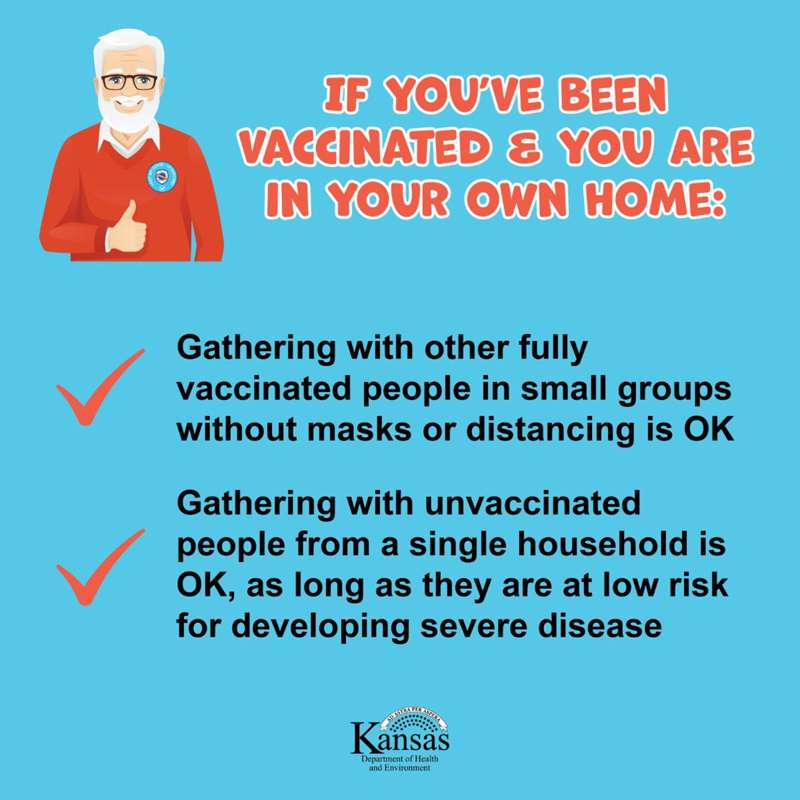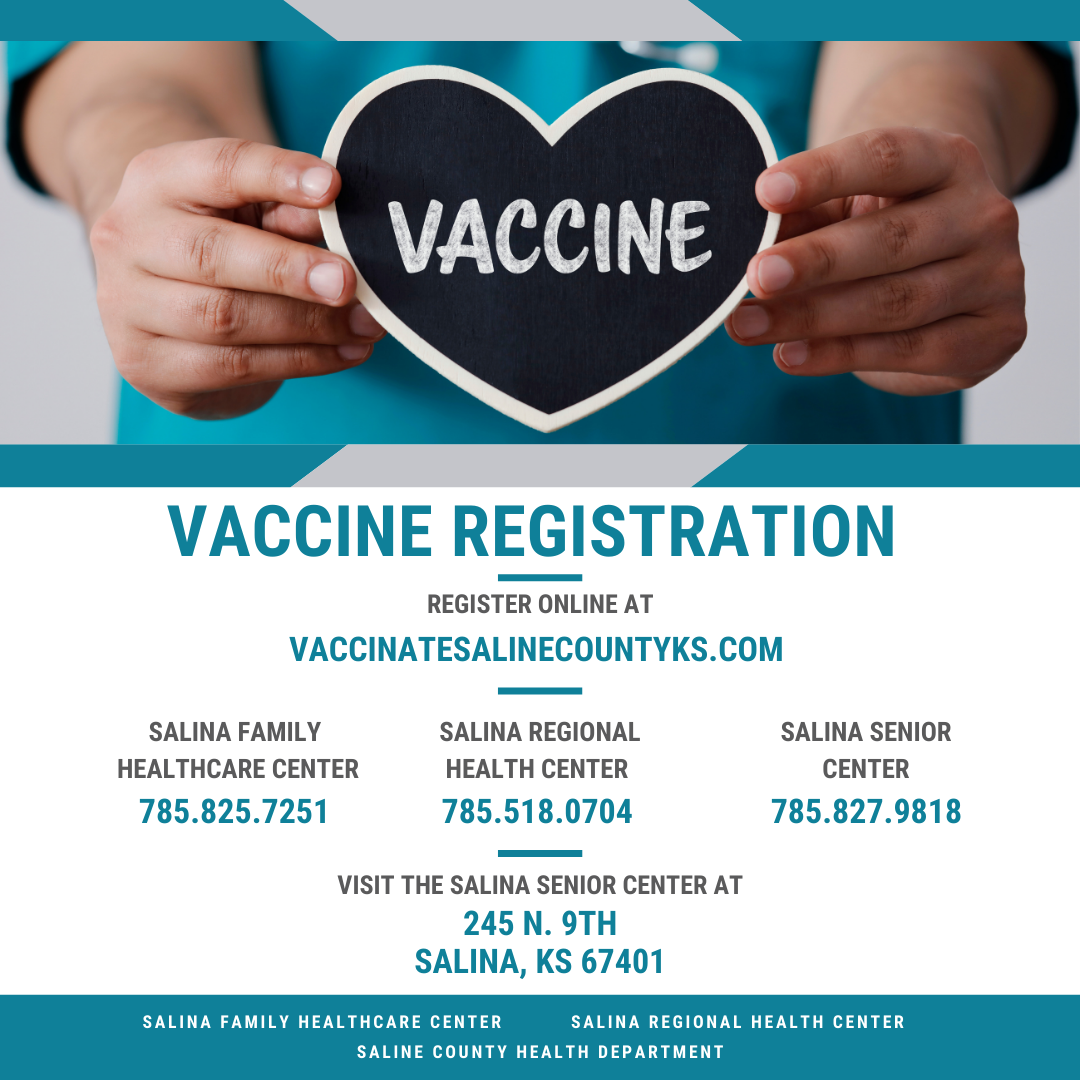Following is the information from Thursday's Saline County Health Department Vax Facts.
We are still scheduling vaccinations for Phase 2 populations. In preparation for Phase 3, we will now begin taking registrations for:
●those aged 16 to 64 with severe medical risks,
●all critical workers, and
●all vaccinated persons prioritized in Phases 1 and 2.
The decision to move into Phase 3 will be determined at the State level.
If you believe you are an eligible member of a Phase 2 or Phase 3 population and have not yet registered, please do so immediately.
If you have already registered, please do not register again.
Quarantine following vaccination
Vaccinated persons with exposure to someone with suspected or confirmed COVID-19 are not required to quarantine if they meet all of the following criteria:
●Are fully vaccinated (i.e., ≥2 weeks following receipt of the second dose in a 2-dose series, or ≥2 weeks following receipt of one dose of a single-dose vaccine).
●Are within 6 months following receipt of the last dose in the series.
●Have remained asymptomatic since the current COVID-19 exposure
Persons who do not meet all 3 of the above criteria should continue to follow current quarantine guidance after exposure to someone with suspected or confirmed COVID-19.
As an exception to the above guidance vaccinated inpatients and residents in healthcare settings should continue to quarantine following exposure to someone with suspected or confirmed COVID-19; outpatients should be cared for using appropriate transmission-based precautions. This exception is due to the unknown vaccine effectiveness in this population, the higher risk of severe disease and death, and challenges with social distancing in healthcare settings.
If the exposed person becomes symptomatic, they should be tested via PCR or antigen test. If they had natural disease recently, meaning they had COVID-19 disease in the last few months, an antigen test within the first 5 to 7 days from symptom onset (depending on the EUA for the test they are using) is preferred. Receiving the vaccine does not affect the results of a PCR or antigen test, only an antibody test.
Masking following vaccination
In conjunction with new CDC guidance, KDHE is issuing similar guidance. Two weeks after completing the COVID-19 vaccination, Kansans may gather in private homes with other fully vaccinated people, in small groups, without masks or distancing. Also, fully vaccinated Kansans may gather in private homes with unvaccinated people, as long as the unvaccinated people are from a single household and are at low risk for developing severe disease.
While private home guidance has changed for those who are fully vaccinated, public health measures still apply to everyone in public settings, including those who have been vaccinated.
●Wear a mask
●Stay at least 6 feet away from others
●Avoid crowds
●Avoid poorly ventilated spaces
●Wash your hands often or use hand sanitizer with at least 60% alcohol


The best vaccine for you is the first one offered to you.
Dillon’s pharmacy is actively taking vaccination registrations and other pharmacies are anticipating being able to offer the same in the near future.
You are encouraged to sign up on as many lists as possible to get the vaccine as soon as possible.
If you receive a vaccine elsewhere please contact us to have your name removed from the registry. You will need to get both your first and second vaccines from the same organization.
Phase 2 populations
Anyone living or working in licensed congregate settings and other special care or congregate environments.
●Licensed congregate settings are facilities licensed by the state or local government, that provide housing or care arrangements and where social distancing is not possible; they provide a form of social service or healthcare (or healthcare-associated) service.
●Settings included in this phase are monitored by the state or the local government, or house vulnerable populations under care, e.g. in-home care and retirement facilities.
●Risk is increased because of:
-Proximity, i.e., residents and staff are less than 6ft away from one another;
-Type of contact, i.e., exposure to droplets, shared surfaces, common items;
-Duration, i.e., average interactions last more than 10 min;
-Potentially high number of contacts and, sometimes, difficulties to implement protective measures.
●Examples include:
-Homeless shelters and other homeless housing settings and dwelling places;
-Congregate childcare institutions, adult and child protective services;
-Emergency shelters or safe houses for victims of domestic violence;
-Corrections facilities, including jails and juvenile justice facilities;
-Behavioral Health institutions (including mental health institutions) and residential treatment centers;
-Adult care homes, residents and staff in home plus facilities not covered in phase 1;
-Senior living homes;
-Home care givers (paid or unpaid), personal care aides.
High-contact critical workers
Workers providing critical services who are at a higher risk of being infected, because their jobs require consistent and close contact with a large number of individuals.
●Critical workers are those necessary to maintain systems, assets and activities that are vital to the state (or national) security, the economy, or public health, as defined by the Department of Homeland Security;
●Risk is associated with the likelihood of infecting oneself or spreading COVID. Factors that increase risk include proximity, type of contact, duration of contacts and challenges to implement protective measures;
●Settings that provide a critical service and have recorded high transmission rates or become clusters in the past are usually high risk.
●Examples include:
-Firefighters, police officers, first responders, correction officers;
-Grocery store workers and food services;
-K-12 and childcare workers, including teachers, custodians, drivers and other staff;
-Food processing, including meat processing plants;
-Large-scale aviation manufacturing plants;
-Transportation workers.
●Workers in the following industries, if they regularly need to be in high-risk settings to perform their duties:
-Retail, warehouses and sales outlets;
-Agriculture;
-Supply of critical services or materials for the COVID response (e.g. PPE);
-The U.S. Postal Service;
-Department of Motor Vehicles.
Senior citizens remain the priority Phase 2 population and continue to be allotted the majority of the unrestricted vaccine doses as we work to distribute vaccines throughout our community.
Vaccine supply remains the primary barrier to vaccinating our community.
Unfortunately due to the state allocation process local staff members are unable to tell you when you can expect a vaccine at the time of your registration. Please be patient and someone will call you as soon as we have vaccine available for you.
You can track KDHE's weekly vaccination allocation to each county on the KansasVaccine.gov data page.
Those without access to the internet can register via phone or by visiting the Salina Senior Services Center.
Please remember to be cordial with the medical personnel who are working tirelessly to serve the Saline County Community.






